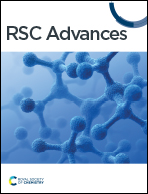Emerging environmentally friendly bio-based nanocomposites for the efficient removal of dyes and micropollutants from wastewater by adsorption: a comprehensive review
Abstract
Water scarcity will worsen due to population growth, urbanization, and climate change. Addressing this issue requires developing energy-efficient and cost-effective water purification technologies. One approach is to use biomass to make bio-based materials (BBMs) with valuable attributes. This aligns with the goal of environmental conservation and waste management. Furthermore, the use of biomass is advantageous because it is readily available, economical, and has minimal secondary environmental impact. Biomass materials are ideal for water purification because they are abundant and contain important functional groups like hydroxyl, carboxyl, and amino groups. Functional groups are important for modifying and absorbing contaminants in water. Single-sourced biomass has limitations such as weak mechanical strength, limited adsorption capacity, and chemical instability. Investing in research and development is crucial for the development of efficient methods to produce BBMs and establish suitable water purification application models. This review covers BBM production, modification, functionalization, and their applications in wastewater treatment. These applications include oil–water separation, membrane filtration, micropollutant removal, and organic pollutant elimination. This review explores the production processes and properties of BBMs from biopolymers, highlighting their potential for water treatment applications. Furthermore, this review discusses the future prospects and challenges of developing BBMs for water treatment and usage. Finally, this review highlights the importance of BBMs in solving water purification challenges and encourages innovative solutions in this field.

- This article is part of the themed collection: 2024 Reviews in RSC Advances


 Please wait while we load your content...
Please wait while we load your content...